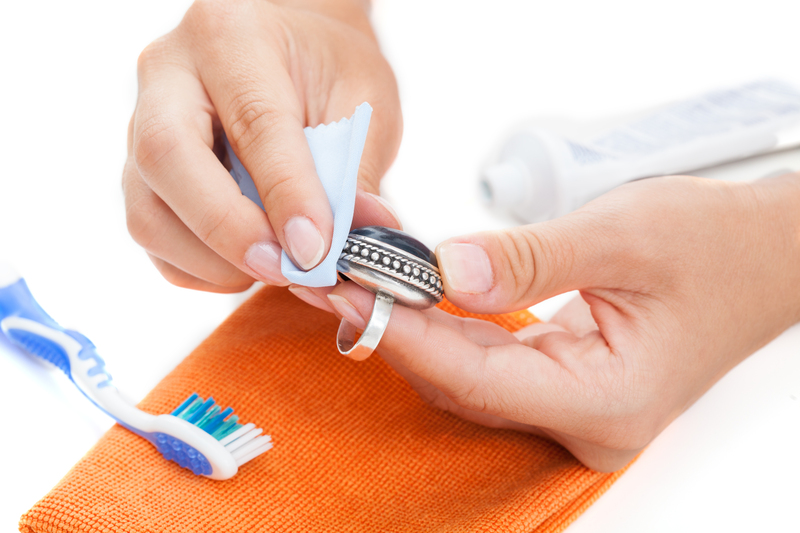Revamp Your Window Sills by Removing Mould
Posted on 03/09/2025
Revamp Your Window Sills by Removing Mould: The Complete Guide
If you've noticed dark streaks, unsightly spots, or stubborn growths creeping along your window sills, you may be dealing with a mould problem. Removing mould from window sills not only restores the aesthetic appeal of your home but also protects your indoor air quality and health. In this comprehensive guide, we'll walk you through the exact steps to get rid of mould on window sills, how to prevent mould from returning, and revamp the look of your sills for good.

Why Mould Grows on Window Sills
Understanding why and how mould forms is crucial before tackling removal. Window sills are especially prone to mould due to:
- Condensation: Moisture droplets forming from temperature differences accumulate on sills, creating the perfect breeding ground.
- Lack of ventilation: Poor airflow means excess humidity lingers, encouraging mould spores to thrive.
- Leaking windows: Damaged seals or frames allow water ingress, keeping wooden sills damp for long periods.
- Organic debris: Dust, dirt, and pollen provide food sources for mould on window frames and ledges.
If left unchecked, mould on window sills can spread to surrounding walls and furniture, staining surfaces and causing structural damage.
The Dangers of Leaving Mould Untreated
Unattended mould growth on window sills poses risks beyond unsightliness. Here's why you should act quickly:
- Allergic reactions: Mould spores can trigger sneezing, runny nose, watery eyes, and headaches, especially for allergy sufferers.
- Respiratory issues: Sensitive groups may experience asthma, coughing, or worse respiratory symptoms.
- Long-term health effects: Prolonged exposure can lead to chronic sinus problems or worsen existing conditions.
- Material damage: Mould breaks down wood fibers, paint, and caulking, resulting in costly repairs.
For family safety and home hygiene, removing black mould from window sills should be a top priority.
Signs of Mould on Window Sills
How do you know when you need to revamp your window sills by removing mould? Look for these telltale signs:
- Black, green, or brown patches that expand gradually on wood or uPVC sills
- A distinctive, musty odour near windows that doesn't go away
- Discoloration around window corners or beneath cracked paint
- Soft or damp sill surfaces, which may feel spongy to the touch
- Bubbling or cracking in paint and caulk
If you spot any of these, it's time for a thorough window sill mould removal and refresh!
Essential Tools & Materials for Mould Removal
Before you start the process to get rid of mould on window sills, gather the following supplies for safety and effectiveness:
- Protective gloves (rubber or nitrile)
- Face mask to avoid inhaling spores
- Safety goggles
- Scrubbing brush or old toothbrush
- Microfiber cloths
- Spray bottle
- Bucket with warm water
- Detergent or mild soap
- White vinegar or hydrogen peroxide (for natural removal)
- Commercial mould remover (where needed)
- Sandpaper or sanding block (for wooden sills)
- Paint or sealant for restoration
Step-by-Step Instructions: How to Remove Mould from Window Sills
Step 1: Prepare the Area
- Open nearby windows for ventilation.
- Clear the sill of any decor, blinds or curtains.
- Lay down old towels to catch drips.
- Put on your mask, gloves, and goggles for full protection.
Step 2: Dry Clean Loose Mould
With a dry microfiber cloth or a vacuum with a HEPA filter, gently wipe or vacuum up loose spores. Avoid spreading them around.
Note: Never attempt to dry-scrub if mould is extensive, as this can release spores into the air.
Step 3: Apply Cleaning Solution
Choose one of the following for cleaning mould off window sills:
- Vinegar Solution: Mix equal parts white vinegar and water in a spray bottle.
- Hydrogen Peroxide: Use 3% solution as is (do not dilute).
- Specialized mould cleaner if stains are stubborn.
Spray the solution generously onto the affected area and let it sit for at least 10-20 minutes to kill spores.
Step 4: Scrub Away Mould
- With a scrub brush or old toothbrush, gently scrub the mould spots and stains.
- Wipe away loosened mould with a damp microfiber cloth.
- Repeat as necessary until all visible traces are gone.
Step 5: Rinse & Dry Thoroughly
- Once clean, wipe down the area with a fresh water-dampened cloth to remove any residue.
- Dry thoroughly with a towel and leave the window open for several hours, as moisture can cause spores to return.
Step 6: Address Stubborn Stains on Wood Sills
- If stains remain on wooden sills, lightly sand the affected area with fine sandpaper.
- Remove all dust, then proceed to reseal or repaint the sill for a complete refresh.
Step 7: Dispose Responsibly
- Seal contaminated cloths and sponges in a plastic bag before discarding.
- Wash your hands thoroughly after the process.
Natural vs. Chemical Mould Removal
Many homeowners prefer natural methods to remove mould from window sills such as vinegar and hydrogen peroxide. These are safe, effective for light infestations, and leave no harsh fumes. For heavy infestations, a commercial mould remover for window sills may be necessary.
- Natural methods are safe around pets and children and work well with regular cleaning.
- Commercial products may be required for black mould or if the infestation has been there for several months.
Regardless of the method, always ensure thorough cleaning and drying to stop mould regrowth.
Restoring Your Window Sills After Mould Removal
Repairing Damage
Sometimes, a simple clean isn't enough, especially for older wooden sills. Here's how to revamp your window sills after removing mould:
- Inspect for rot or deep decay. Replace sections if wood is soft or crumbling.
- Use wood filler to patch any small holes or gouges after cleaning and drying the area.
- Sand smooth to remove old paint or rough patches left by sanding after mould removal.
- Apply a high-quality primer to block future stains and protect the wood.
- Paint or seal the sill with mould-resistant paint to give your window a fresh, revitalized look.
Updating the Look
Once repaired, consider a full revamp with a new finish:
- Brighten up sills with a fresh coat of white or pastel paint for a modern look.
- Choose a natural wood stain to bring out the texture and warmth of real wood sills.
- Add decorative trim or molding for a luxury finish.
- Install window sill covers for easy future maintenance and mould prevention.
Preventing Mould Regrowth on Window Sills
To make sure you never have to remove mould from your window sills again, incorporate these proactive steps into your regular cleaning routine:
- Improve ventilation: Use extractors or open windows daily to reduce humidity.
- Wipe down window sills: After showers or rainy weather, dry off any moisture promptly.
- Seal leaks: Inspect your window frames, sills, and caulking for gaps or cracks and seal as necessary.
- Deep clean regularly: Monthly cleaning with a vinegar solution keeps spores in check.
- Use a dehumidifier: Especially in kitchens, bathrooms, or any room with high humidity.
- Clear debris: Dust and vacuum sills periodically to remove organic matter mould feeds on.
When to Call a Professional for Window Sill Mould
Sometimes, DIY mould removal on window sills may not be sufficient. It's best to seek professional help if:
- Mould covers an area larger than 1 square meter
- You suspect hidden mould behind the wall or sill
- There's persistent water leakage or structural damage
- Health symptoms worsen after attempted cleaning
Remediation experts have the tools and expertise to fully resolve stubborn or hazardous mould infestations.

Frequently Asked Questions: Mould Removal for Window Sills
-
What kills mould permanently on window sills?
Vinegar, hydrogen peroxide, and commercial biocides all kill surface moulds, but moisture control is necessary for permanent prevention. -
Can I just repaint over mouldy window sills?
No, painting over mould traps spores and causes paint failure. Always remove and neutralize mould before repainting or restoring your sill. -
Is black mould on window sills dangerous?
Black mould may trigger allergies and respiratory distress. While not all types are toxic, prompt removal is essential for a healthy environment. -
How do I prevent mould returning to my window sills?
Keep sills dry, fix leaks, clean regularly, and maintain good airflow around all windows in your home.
Conclusion: Enjoy Cleaner, Healthier Sills Today
Revamping your window sills by removing mould is a transformative home improvement project. With the right cleaning techniques, a few simple tools, and preventative habits, you'll restore your window sills to bright, beautiful condition and safeguard your family's well-being. Remember, regular maintenance and rapid response to moisture will help you enjoy mould-free window sills for years to come.
Ready to tackle mould on your window sills? Use the tips and steps above for a dramatic, lasting difference in your home's beauty and air quality. For more home care advice, explore our related guides on refreshing your interiors and creating a healthier living environment.



